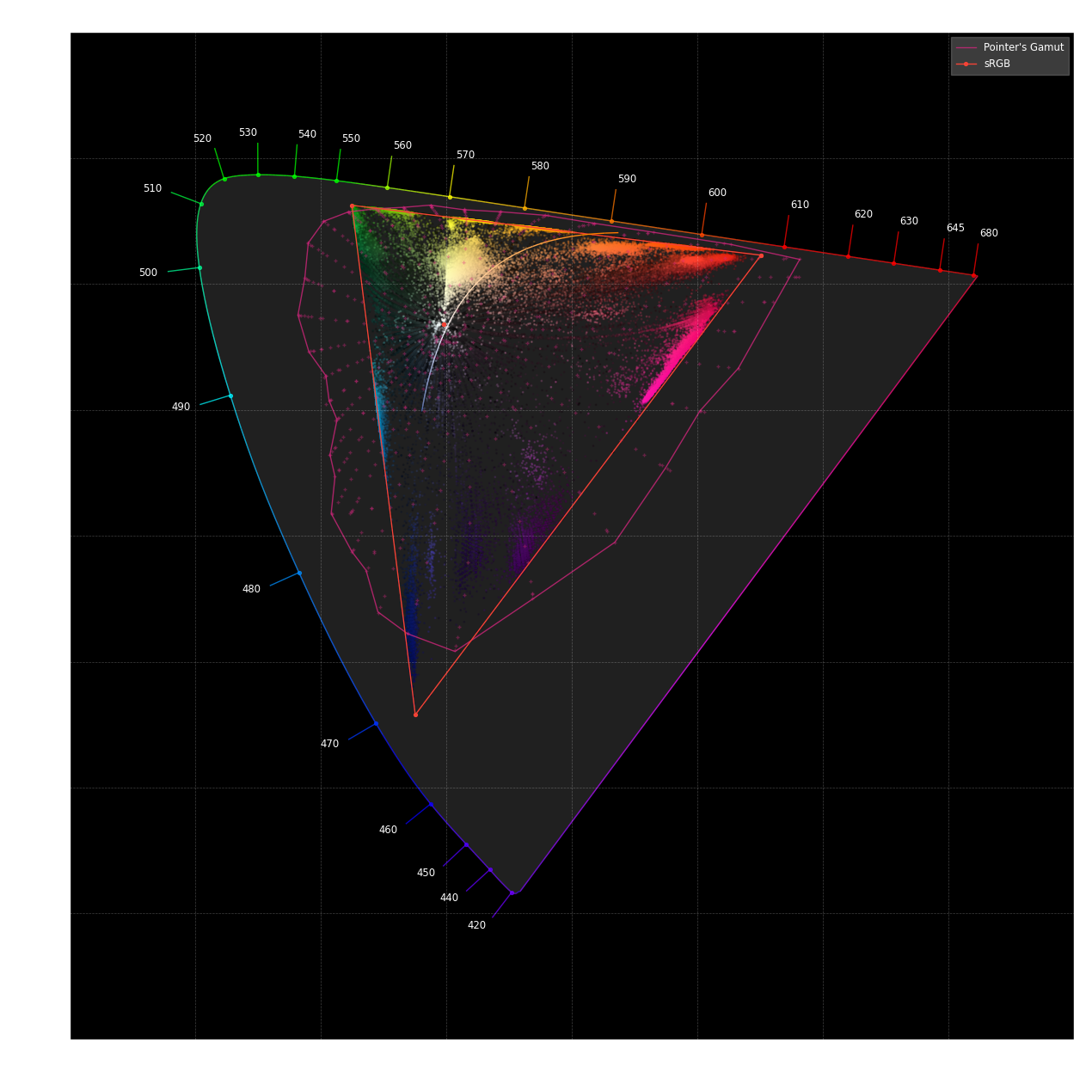Colour 0.4.0 is available!
We are pleased to announce that after over a year of work, Colour 0.4.0 has been released!
This release integrates most of the GSoC 2021 work from Cédric (@villirion), all the code from Geetansh (@SGeetansh) and the remaining GSoC 2020 code from Nishant (@SGeetansh). We would like to thank them again for their excellent contributions!
We are finally dropping Python 2.7 support and the minimal version is now Python 3.8 as per https://scientific-python.org/.
The following minimal dependency versions are also required:

The highlights of this release are as follows:
Colour can on iOS and iPadOS with Pyto.
The import of
colouris now 3.6 times faster.Typing annotations have been added and the codebase is checked with Mypy.
The documentation has been updated and uses the pydata-sphinx-theme and has better compliance with PEP257.
The code formatter is now Black.
Many Python 3 features such as f-Strings or the
dataclassdecorator have been adopted.The plotting API has been improved to be more consistent when setting the colours of some figures, e.g., spectral or planckian locus.
-
New colour appearance models:
Zhai and Luo (2018) chromatic adaptation model.
Kim, Weyrich and Kautz (2009) colour appearance model.
ZCAM colour appearance model.
Helmholtz-Kohlrausch effect estimation.
-
New colour models:
Oklab colour model.
Hanbury (2003) IHLS (Improved HLS) colourspace.
DIN99b, DIN99c, and DIN99d refined formulas.
ProLab colourspace.
Sarifuddin and Missaoui (2005) HCL colourspace.
-
New RGB colourspaces and transfer functions:
Nikon N-Gamut colourspace and the N-Log log encoding.
Blackmagic Wide Gamut colourspace and the associated Blackmagic Film Generation 5 OETF.
DaVinci Intermediate OETF.
RED Log3G10 encoding and decoding curves with linear extension.
-
Other notable features:
R’G’B’ to Y’CbCr matrices computation.
Gamut ring/section plotting.
Rösch-MacAdam colour solid hue lines.
Huang et al. (2015) power-functions.
LUT 1D, LUT 3x1D and LUT 3D inversion.
UPRTek and Sekonic spectral data parsers.
SPImtx LUT input and output.
Support for the OpenColorIO processor.
Note that the optional dependency is not specified in the pyproject.toml, see AcademySoftwareFoundation/OpenColorIO#1573 for more information.
Thanks again to all the contributors to this release!
Please take a look at the releases page more information.
Comments